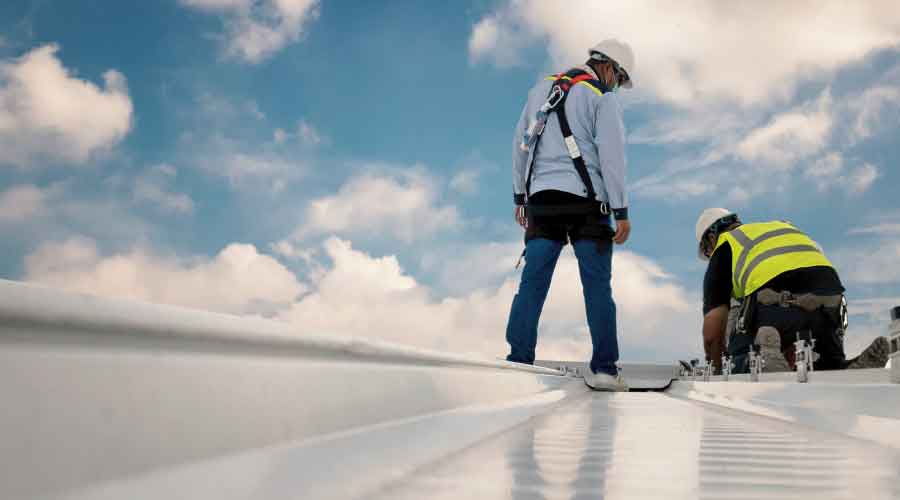Mineral Aggregate Protects Asphalt Built-Up Roofing Systems
One important feature of asphalt BUR systems is the use of mineral aggregate to physically protect the layers of asphalt and shield them from ultraviolet (UV) radiation. Using aggregate as a top surface meets many criteria for sustainability.
Aggregate not only protects the roofing surface. It also provides another layer of insulation, as well as reflectivity. It is available locally in most parts of the United States, reducing the distance between the source and job site and the amount of fuel needed to transport it.
Recent code changes affecting gravel-surfaced BUR include a ban on its use in some high-wind areas. In light of these changes, roofing manufacturers have begun educating managers, contractors, and code officials about the numerous benefits of gravel and ballasted systems as viable low-slope options. Gravel-surfaced BUR systems perform well in high-wind areas and comply with various state, local, and municipal codes — so long as they comply with specific suggested or required installation techniques.
Aggregate comes in various colors, sizes, and types, and workers can coat it for preferred aesthetics or reflectivity. Mineral aggregate is quite stable when crews apply it after a flood coat, and if it does scour after years of use, crews can easily replenish it.
A built-up roofing system with mineral-aggregate surfacing is a sustainable option, but like all quality roofing systems, regular preventive maintenance is essential to maximize the roof’s life and further enhance its sustainability.
Related Topics:















